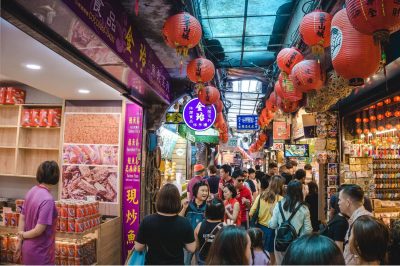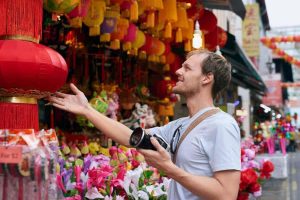The history of Taiwanese coffee dates back to the 1600s, when the Dutch from the Netherlands tracked through Sri Lanka, Indonesia, Philipines, and finally arrived in Taiwan. From the Philipines, they brought with them coffee plants and planted the seeds in a few areas of the region. That brief history lesson lets you know one thing – the island today is rich with high-quality beans and java that exquisitely balance acidity, sweetness, and bitterness, all of which are delivered via a smooth flavor and no off-notes to taint the experience. We take our coffee seriously because we know that you do too, so without further adieu let’s explore more about what you need to know about coffee in Taiwan.
What Visitors Need to Know About Taiwan’s Place in Delivering Award Winning Coffee to East Asia and Beyond
A Brief History of Taiwanese Coffee
The British came to Taiwan in 1884 and realized Taiwan has a suitable environment to grow coffee. This is because the geographical environment in Taiwan is similar to Central and South America. They brought more than 100 Arabica coffee seedlings from the Philipines and wanted to plant them around the Taipei area. However, due to problems with transporting the seedlings, many died along the way, and only a few seedlings remained.
The British did not give up and tried the second time. This time transporting the coffee seedlings to the Wenshan area near Taipei City. This time, the plantations were a success. The British cultivated more than 3000 coffee trees. Unfortunately, after a few years of cultivation, a fire burnt out and destroyed most of the coffee plants.
Coffee During the Japanese Colonial Period
During the era when Taiwan was under Japanese rule, the Japanese again realized parts of Taiwan had the perfect environment to grow coffee plants. They started to revive the coffee farms and focused on a few unique areas for planting, such as Nantou Gukeng, Alishan, Tainan Dongshan, and Taidong. Because the coffee produced in Taiwan had a unique aroma and flavor, the Japanese would export these Taiwanese coffee beans back to Japan. Even the Japanese Emporer at that time preferred Taiwanese over Japanese coffee!
Fast forward to now, Taiwanese coffee is still a precious commodity as the local demand outstrips supply. A cup of Taiwanese coffee can easily double the price of exported coffee. During the past ten years, coffee grown in Taiwan had won many international awards and is well-known for its fruity and sweet flavors.
A visit to a local coffee farm in Gukeng will open up your eyes when you visit Central Taiwan. If you are not a coffee drinker, you may change your perception of coffee after the visit! Coffee harvest season is from December to May each year. During this period, it is the best time to visit a coffee farm to view how farmers hand-pick the best-riped coffee beans. After the beans are harvested, they go through the process from drying, removing the skin, hand-picking the best beans to finally roasting them. Finally, sit down and enjoy a cup of local Taiwanese coffee for a genuinely local coffee experience.
In case you don’t have time to travel down to central Taiwan to visit the local coffee farms, during November each year, Taipei holds the International Taiwan Coffee Show in the Taipei Nangang Exhibition Center. The show features coffee exhibitors and their coffee products from Taiwan and all over the world.
Check out our article on the 3 Best Coffee Shops in Taipei so that you can find a place to kick back and enjoy some locally grown java.
Looking for a more immersive experience into the coffee culture of Taiwan? A local guide can make that happen. Be sure to book a Taipei Gourmet Experience Tour with one of our friendly locals.







